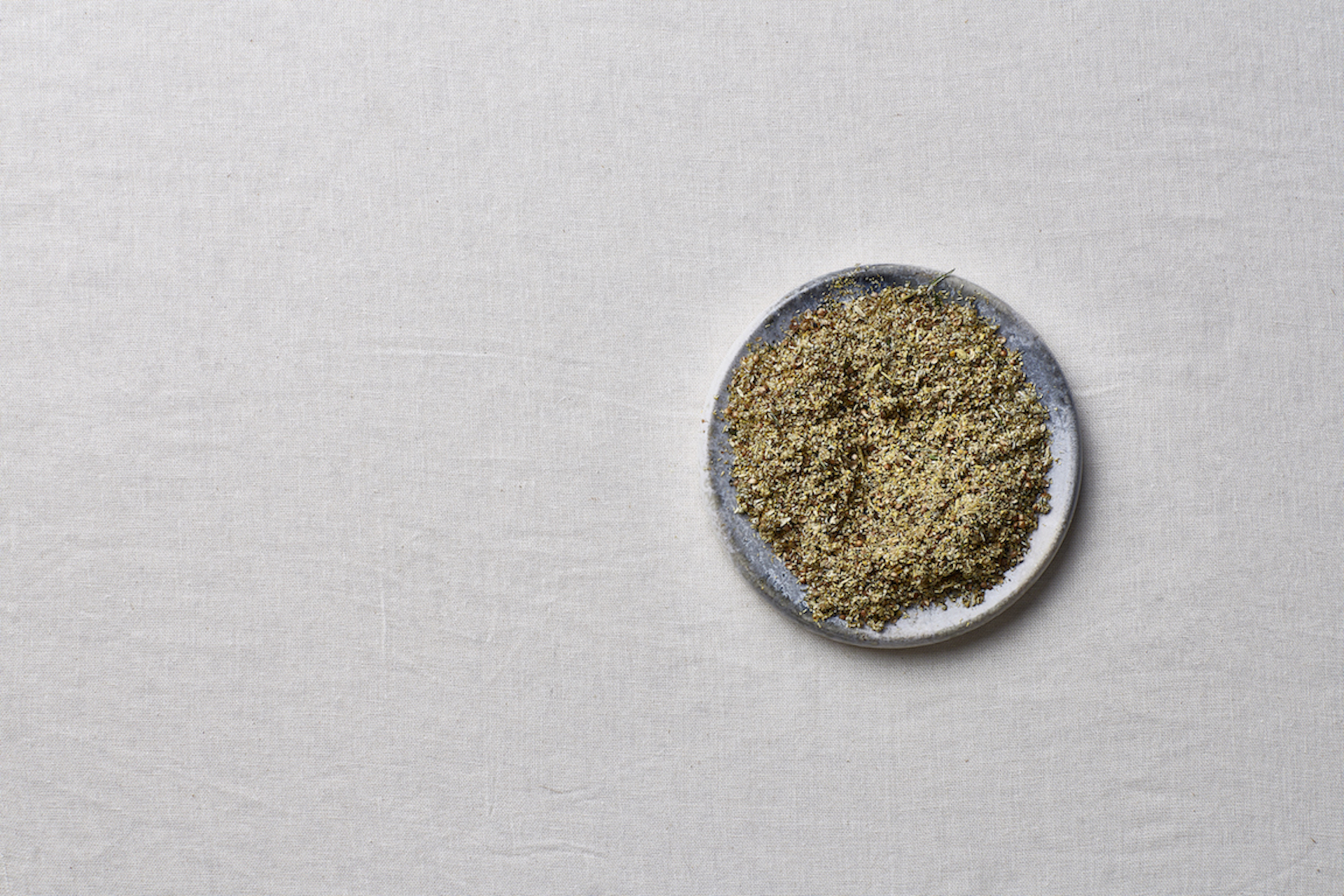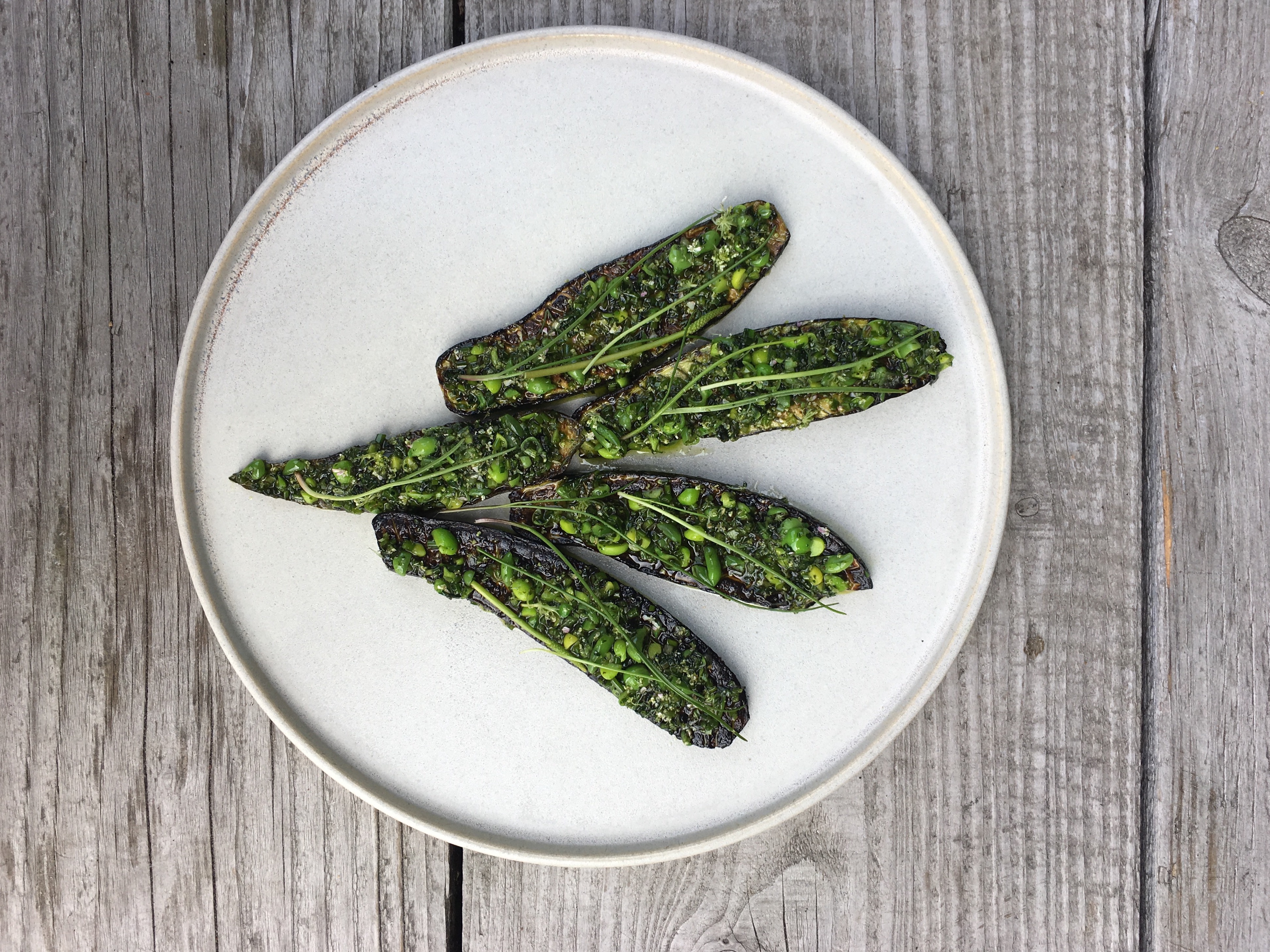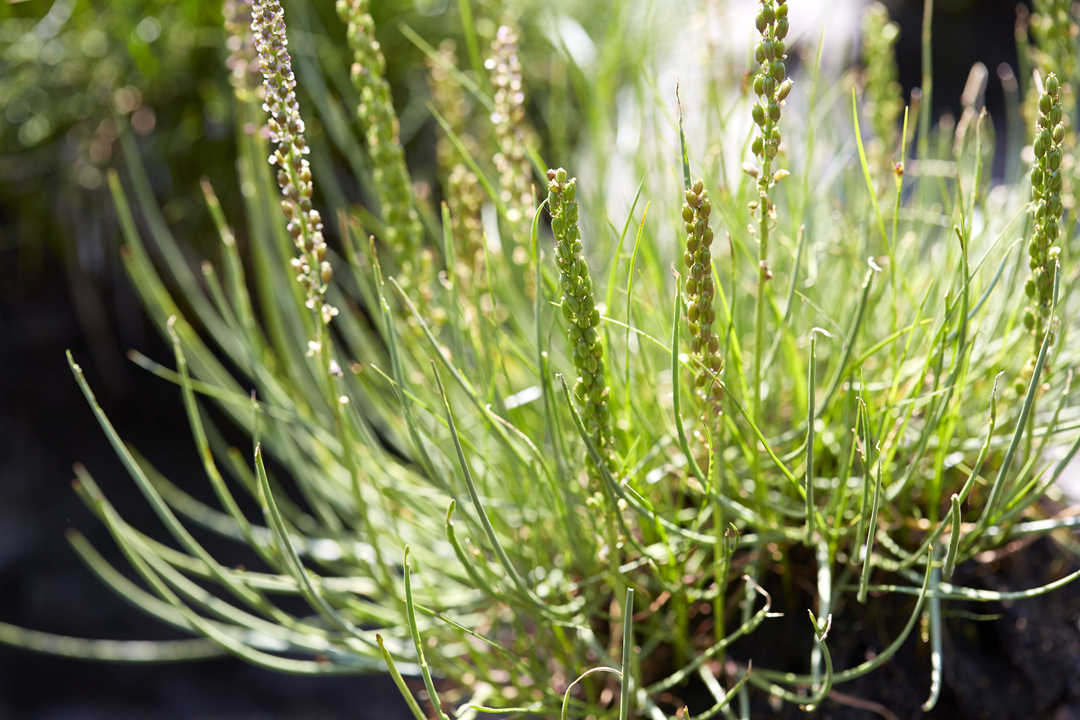
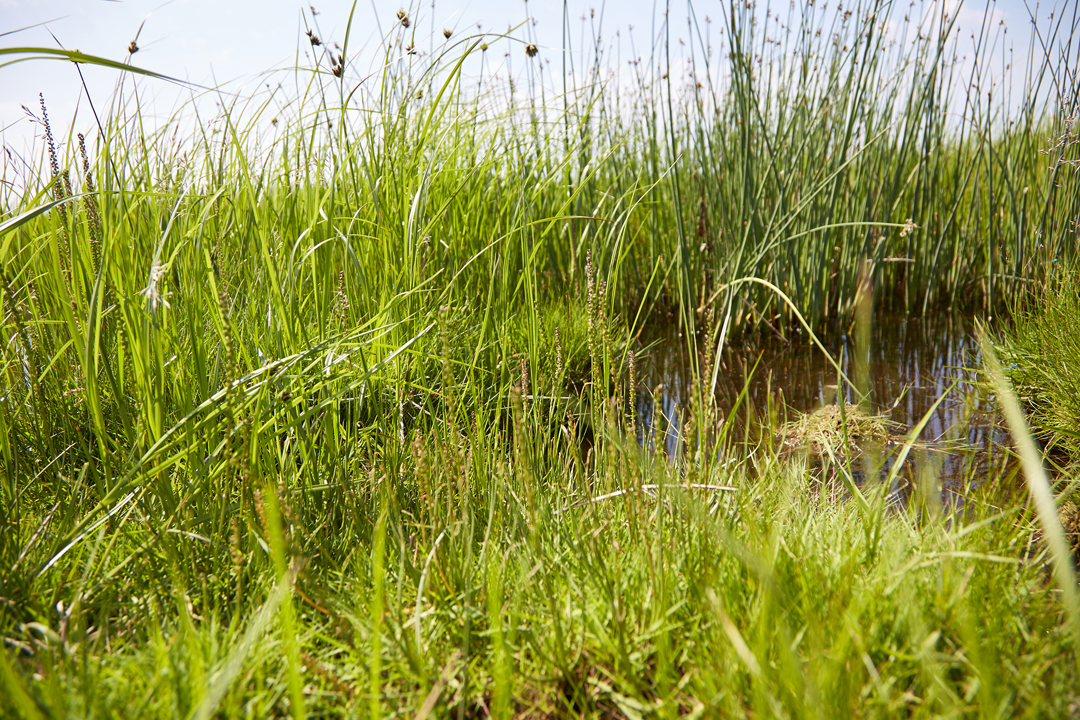
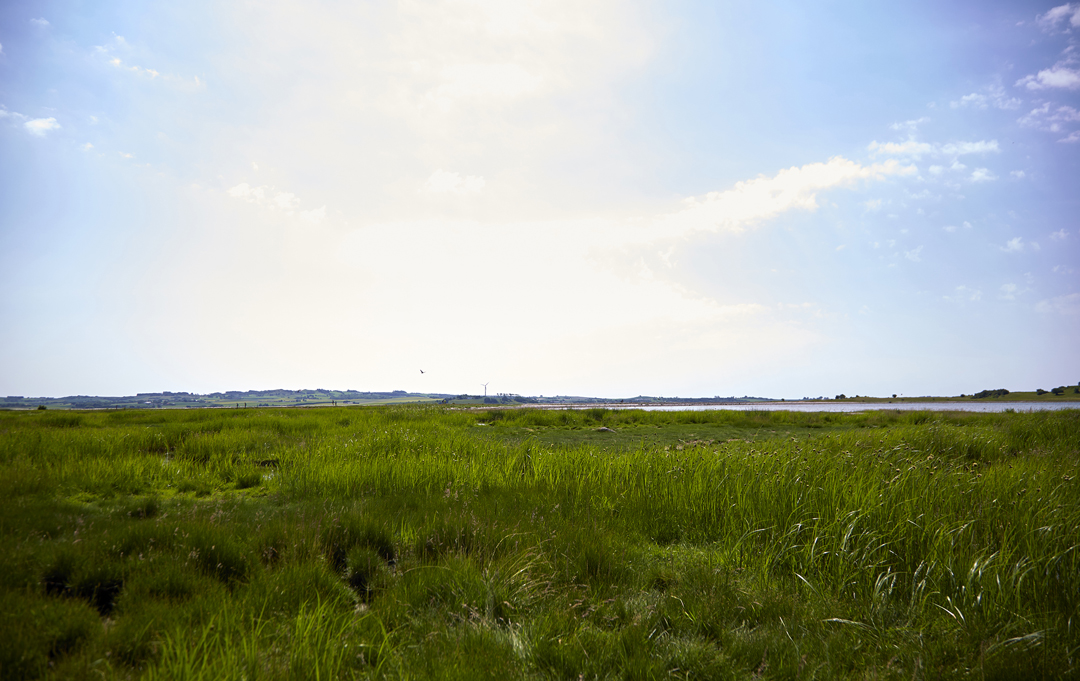
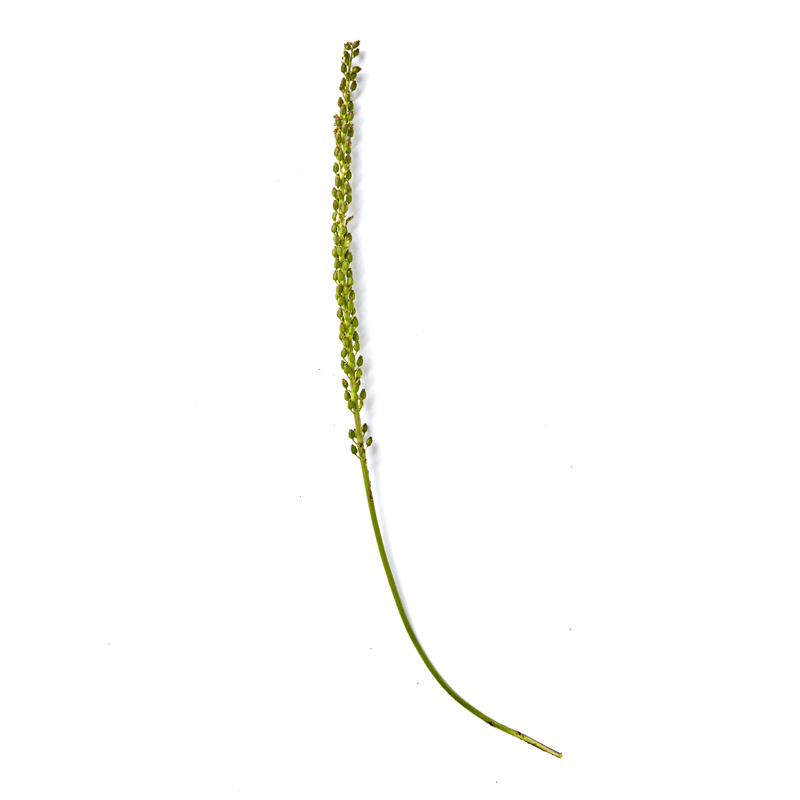
Sea arrowgrass
Sea arrowgrass is an aquatic herb that packs a punch. Its cilantro-like flavor brings to mind a warmer climate and turquoise waters, making this a much-coveted herb.
-
Where to Find It
Sea arrowgrass is a hardy plant that can tolerate full sun and salty environments. It needs lots of water and moist soil to survive. Look for it in marshy areas along the coast that are regularly flooded by the ocean.
Salt marshes, marshlands.
-
When to Find It
Sea arrowgrass can be picked from May until September.
Entire plant: May, June, July, August, September.
-
How to Spot It
From a distance, sea arrowgrass looks like a tuft of grass with thick, puffy blades. When seen from above, the leaves look triangular, but are narrow, long and fleshy. A line runs down the surface; inside, the leaves are hollow. From its cluster at the root, the plant stands erect in the air. Its flowers look like tiny baskets with purple edges. Its seeds are stored in small, egg-shaped pods. On the stem, the flowers and seeds look like very thin, green baby corn.
-
How to Pick It
Cut off the leaves one by one, so you don't accidentally uproot the plant. When gathering the arrowgrass flowers and seeds, you should cut or clip the stem off. Plants growing closest to the shore will have the best taste. Don't take more than two thirds of the flowers and seeds, and pick from several plants so that you don't put too much stress on just one of them.
-
NB!
The Ministry of Environment and Food of Denmark do not recommend consumption. Sea arrowgrass contains acids that can release the poisonous cyanide. In a "worst case scenario" consumption of more than 2 grams (for an adult of 70 kilos) can exceed the reference dose determined by the European Food Safety Authority (EFSA).
Risk of misidentifying the plant
There is no risk of mistaking the plant for another dangerous or undesirable plant. There is, however, a similar-looking plant that isn't particularly tasty. Sample as you pick.


